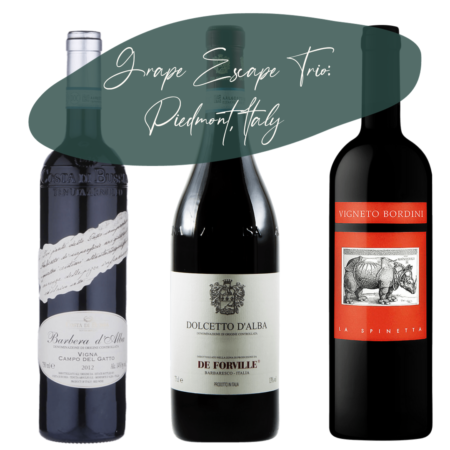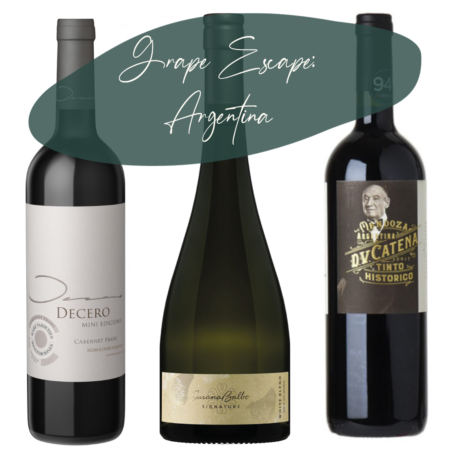Description
Explore the high quality wines of Argentina through this Grape Escape. Check out the blog post to learn more.
| Wine | Description |
| Bianchi Enzo Red Blend, San Rafael, Mendoza 2018 | Paul Hobbs is the consulting winemaker for this red blend from the San Rafael district in the Las Paredes mountains in Mendoza. Velvety tannins and rich fruit showcase his signature style. The blend consists of 41% Cabernet Sauvignon, 35% Malbec, 15% Merlot, and 9% Petite Verdot. |
| Decero Cabernet Franc, Remolinos Vineyard, Agrelo 2019 | A single-vineyard bottle of Cabernet Franc from high-elevation vineyards. Part of their ‘mini ediciones’ line, these micro-lots are carefully crafted, with under 600 cases produced of this fantastic wine. It’s one of my personal favorites! |
| DV Catena, Historico Tino, Mendoza | A blend of Malbec, Petit Verdot, and Bonarda created to honor Don Domingo’s legendary abilities as a master blender. Domingo Vicente Catena married Angelica Zapata in 1934, thus giving birth to the Catena Zapata tradition. His son, Nicolas, made Malbec famous. |
| Susana Balbo Signature White Blend, Valle de Uco 2021 | Torrontes is the signature white grape of Argentina, often inexpensive and tasting like the overly floral soap at your grandmother’s house. This white blend is the most enjoyable expression of Torrontes I have ever had, as it’s blended with almost equal parts Chardonnay and Sauvignon Blanc. It’s light, bright, with a citrusy florality. |
| Catena Zapata, Argentino Malbec 2021 | One of the most prestigious Malbecs in Argentina, the Argentino’s label depicts four female figures that embody different milestones in the history of Malbec. Eleanor of Aquitaine oversaw the planting of Malbec in France, an immigrant carried the grape to Argentina, the third woman symbolizes phylloxera, and the last woman is Adrianna, a member of the Catena family. |
| Colome, El Arenal Malbec, Salta 2020 | El Arenal, a vineyard planted by Donald Hess of California fame, sits at an incredible 2600 meters above sea level in the Alto Calchaqui Valley. Higher elevation results in thicker skins, thus more structured tannins and a richer color. Under 600 cases are produced. |





